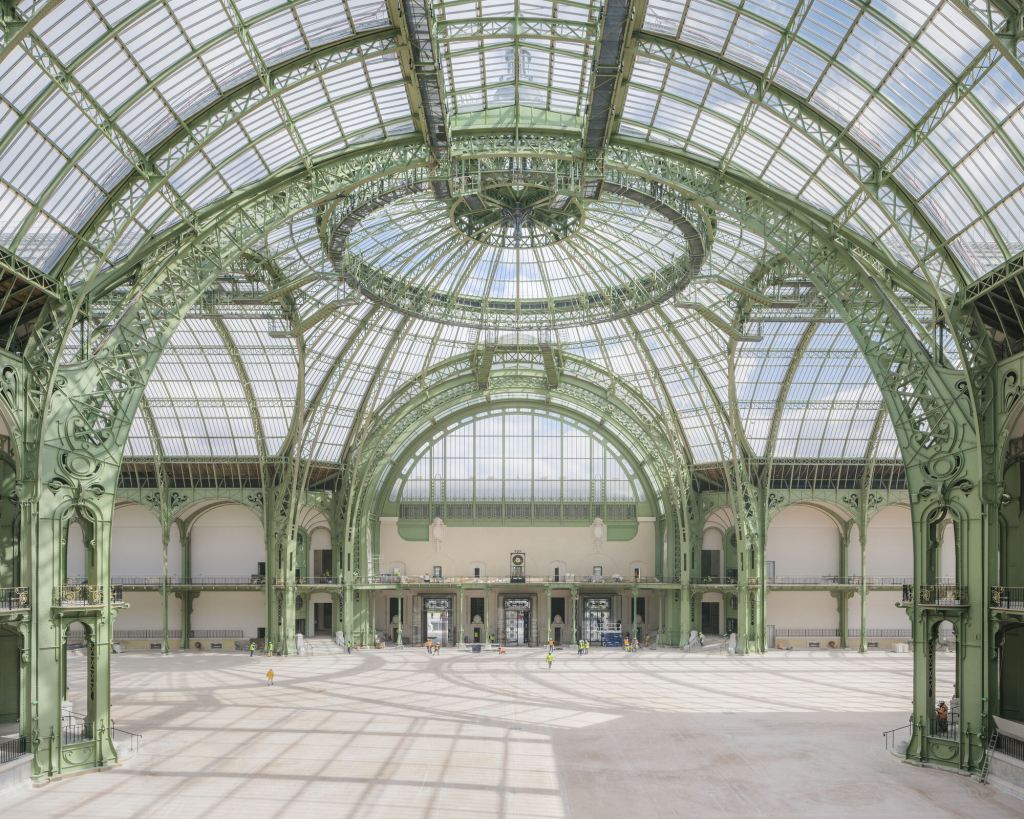PARIS — “It’s only the Grand Palais,” joked architect François Chatillon as he led visitors toward the nave of the renovated Paris landmark.
After three years heading the most comprehensive overhaul ever undertaken of the protected building, the Frenchman might be used to the sight, but standing under the massive 17,500 square feet of glass and metal arching into a clear blue spring morning left everyone else speechless.
It is the first part of the 466 million euro renovation to be completed and come July, fencing and taekwondo competitions for the 2024 Paris Olympic Games will be taking place on the 145,000-square-foot concrete slab. The renovation has seen the capacity of the nave jump from 3,000 to 9,000 people.

While sports will inaugurate the new space, fashion isn’t far: the nave’s entrance is now named after Gabrielle Chanel.
The plaque bearing the couturier’s name was unveiled during a visit of French President Emmanuel Macron marking 100 days until the Olympic Opening Ceremony, in the presence of Culture Minister Rachida Dati; Association of French National Museums — Grand Palais President Didier Fusillier, and Bruno Pavlovsky, president of Chanel fashion and Chanel SAS.
The most striking change in the Grand Palais is the monumental glass window that separates the nave designed by Henri Deglane and the Salon d’Honneur section, which is the work of Albert Louvet. A third architect, Albert Thomas, was in charge of the rear section, which became known as the Palais de la Découverte science museum.
This is a perspective that has not been seen since the late 1930s. Above it is another major feature of the nave — a sweeping staircase by Louvet that Chatillon described as “an underestimated piece in the history of Art Nouveau” as it was created at the cusp of two currents of this major artistic movement.
Opening spaces that had been partitioned over the decades was central to the overhaul helmed by Chatillon, one of 30 chief architects of historical monuments qualified to undertake such a task in France.
So was saving some of the features that have been added over time, such as the 1960s remodel of the national galleries that border the Champs-Elysées by French architect Pierre Vivien.
Chatillon regaled visitors with the story of how Chris Dercon, then-chief executive officer of the Association of French National Museums — Grand Palais, put his mandate on the table in defense of this conservation.
Beyond that, many of the evolutions that have been infused into the site’s 775,0000 square feet — and that’s without counting the various stories — are invisible.
The nave’s concrete slab was replaced with an active version with thermo-regulating properties that can adjust the thermal impression on a height of up to three meters.
There are now motorized controls to open windows near the top of the metal-and-glass structure, and much work has been put into ensuring energy saving. Chatillon even spoke of experimentation on new types of solar films to face rising temperatures.
Intumescent paint — utilized as passive fire protection — was used on the metallic structures to allow exhibits to be brought closer and remove the need for further protective fireproof partitions.
Invisible shutters were even added to some of the windows, to give increased modularity — or keep Chanel show preparations under wraps. The fashion house signed on to be principal sponsor of the renovation, contributing 25 million euros to the budget, with the rest footed by the French government.

In April, 1,100 workers were still toiling away to get the building shipshape in time — and continue working afterward.
While events such as Chanel’s spring ready-to-wear 2025 show and the Paris+ by Art Basel art fair will be held in the Grand Palais in the fall, renovations are slated to continue into 2025.
Once completed, the Grand Palais complex will once more include the Palais de la Découverte science museum and be the temporary home of the Centre Pompidou as the contemporary art institution undergoes its own renovation.
Remodeled spaces will include the entrances for visitors as well as artworks — the first will be in a newly verdant square just off the Champs-Elysées, while the other was tucked into another leafy avenue nearby. Stables in the underbelly of the building will be turned into a visitor center and other facilities.



